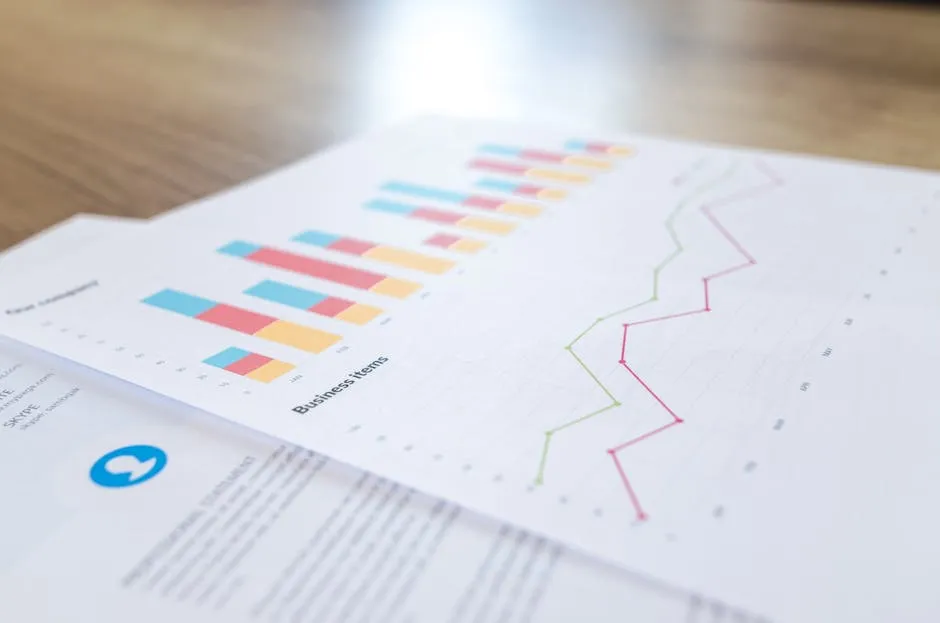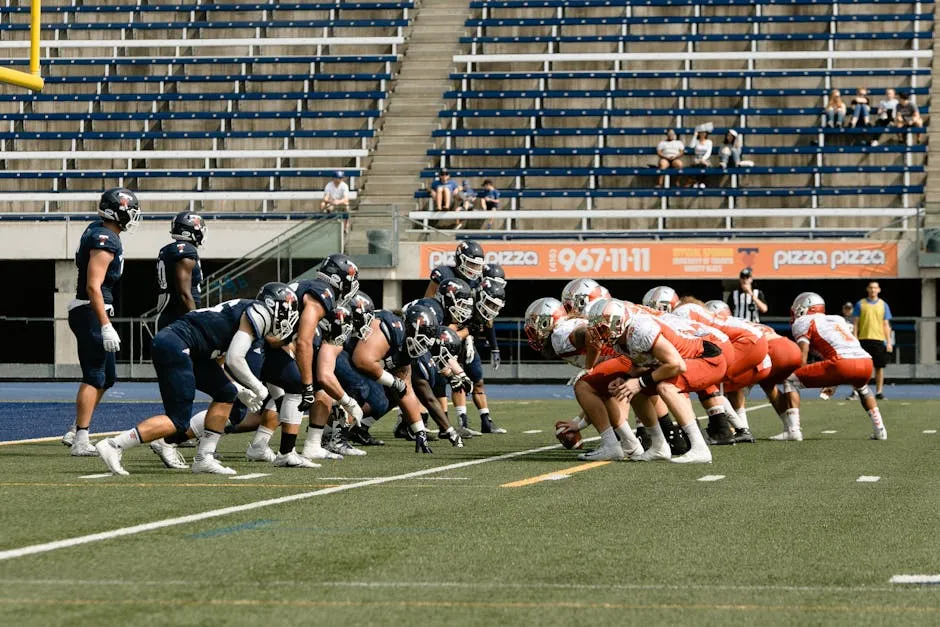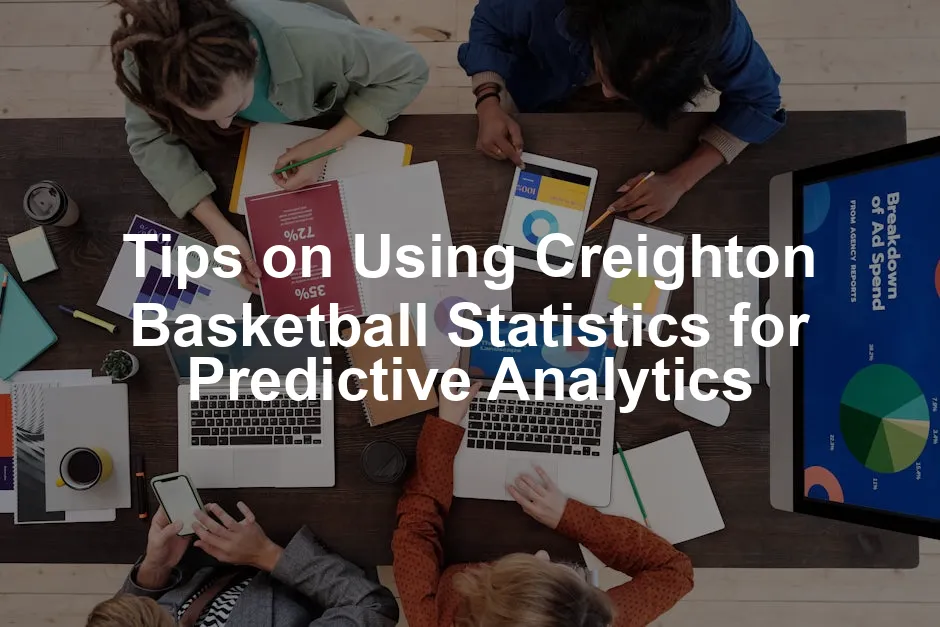Introduction
In sports, data is the new MVP. Gone are the days when a coach’s gut feeling was enough. Today, basketball teams rely on statistics to gain an edge. Whether it’s player performance, game strategies, or opponent analysis, numbers tell a compelling story. And when it comes to Creighton basketball, these statistics are a treasure trove for predictive analytics.
Imagine trying to shoot a basketball without knowing where the hoop is. Sounds silly, right? Yet, many fans and analysts still approach game predictions without fully utilizing statistical insights. Creighton basketball stats serve as a GPS, guiding you through the often murky waters of game forecasts. Just as a GPS provides real-time data to help you avoid traffic jams, analyzing Creighton’s historical and current performance metrics can help you dodge the pitfalls of inaccurate predictions.
As the trend of data-driven decision-making rises in sports, savvy analysts are harnessing this power. It’s not just about wins and losses anymore; it’s about understanding the nuances of player stats, team matchups, and historical trends. The more you know your numbers, the better your predictions will be—a fun challenge for any basketball fanatic!

Summary of Key Points
In this article, we will break down the essentials of using Creighton basketball statistics for predictive analytics. Understanding player performance metrics is crucial. Metrics like points per possession, effective field goal percentage, and turnover rates help in evaluating how individual players and teams perform.
Team statistics play a significant role as well. Analyzing overall offensive and defensive efficiency can provide insights into how Creighton stacks up against its opponents. Additionally, historical data is invaluable. Knowing how Creighton has performed against specific teams in the past can help predict future outcomes.
But that’s not all! We’ll also explore advanced analytics and machine learning models. These powerful tools enhance prediction accuracy and can simulate game outcomes based on various scenarios. Imagine being able to predict the outcome of a game with a high degree of certainty—advanced analytics can make that happen.
Stay tuned as we dive into specific tips and techniques throughout the article. We’ll cover shot selection analysis, which looks at where players are most effective on the court, and matchup considerations, which assess how different playing styles can influence game results. By the end, you’ll have a comprehensive toolkit for making informed predictions, whether you’re a fan, analyst, or savvy bettor.

Understanding Creighton Basketball Statistics
The Importance of Statistics in Basketball
Statistics in basketball are more than just numbers; they’re the backbone of strategy. Coaches, analysts, and fans alike rely on stats to make informed decisions. For instance, a coach might tweak a game plan based on a player’s shooting percentage. If one player is hitting 40% from beyond the arc, it makes sense to create plays that get him open looks.
Different types of statistics are used in basketball. Player stats like points, rebounds, and assists are the most visible. But let’s not forget about shooting percentages, which tell a deeper story. For example, a player may score 20 points, but if he did it on 25 shots, his efficiency could raise eyebrows.
Creighton’s approach to statistics is particularly telling. The Bluejays utilize a mix of traditional metrics and advanced analytics. They dive into shooting percentages, turnover ratios, and assist-to-turnover ratios. All these numbers help paint a clearer picture of how well the team and individual players perform on the court. It’s like using a magnifying glass to scrutinize a masterpiece—every brushstroke matters!
In summary, statistics are crucial for strategy formulation and player evaluation. They provide a framework to understand performance and make real-time adjustments. For Creighton, leveraging these numbers can mean the difference between a sweet victory and a bitter defeat.
If you’re looking to dive deeper into basketball analytics, consider grabbing a copy of a great basketball statistics book. It’s a slam dunk for anyone looking to elevate their understanding of the game!

Key Metrics for Predictive Analytics
When it comes to predictive analytics in basketball, certain metrics stand out as key indicators. These metrics don’t just tell you what happened; they help predict future outcomes. Let’s break down some of the essential metrics used in basketball analytics.
Points per possession is one of the most telling stats. It measures how efficiently a team scores relative to the number of possessions they have. For Creighton, analyzing this metric can reveal whether their offensive strategies are effective. A higher points-per-possession rate indicates a more productive offense, crucial for game predictions.
Next up is effective field goal percentage (eFG%). This metric adjusts for the value of three-point shots, providing a more accurate reflection of a player’s shooting performance. For Creighton, this number can help identify which players are maximizing their scoring opportunities. If a player consistently has a high eFG%, it might be time to draw up more plays for them.
To improve your own shooting skills, consider a basketball shooting training aid. It can help you refine your technique and increase your shooting accuracy—because who doesn’t want to sink that three-pointer with style?
Turnover rates are equally important. A team that turns the ball over frequently is less likely to win games. By keeping this stat in check, Creighton can maintain control during high-pressure situations.
Lastly, offensive and defensive efficiency are vital for understanding team dynamics. Offensive efficiency calculates points scored per 100 possessions. Conversely, defensive efficiency measures points allowed. For Creighton, these metrics can highlight strengths and weaknesses as they prepare for different opponents.
Applying these metrics to Creighton basketball provides invaluable insights. For instance, if their offensive efficiency dips against a strong defensive team, adjustments are necessary. Understanding these metrics not only helps predict game outcomes but also enhances overall team strategy. By focusing on these key performance indicators, Creighton can better navigate their season and remain competitive in the Big East Conference.

For further insights into sports analytics, check out this article on Michigan State basketball statistics for sports analytics professionals.
Armed with this knowledge, fans and analysts alike can engage in more meaningful discussions about game outcomes and player performances. After all, in the world of basketball, every statistic tells a story—it’s up to us to read it!
Using Advanced Analytics for Predictions
Machine Learning and Predictive Models
Ah, machine learning! The cool kid on the block in sports analytics. When it comes to sports, machine learning is like having a crystal ball—except it’s powered by data, algorithms, and a sprinkle of magic. In basketball, machine learning can analyze heaps of data to predict game outcomes more accurately than your friendly neighborhood sports pundit.
So, how does this all work? Picture this: you have data from Creighton’s games—every shot taken, every rebound grabbed, and every turnover committed. This data is fed into predictive models that learn from patterns. It’s like teaching a dog tricks but way more complex. Each game’s performance creates a database that helps refine predictions for future games.
One notable player in the predictive game is Stats Insider. They utilize simulation models that simulate match outcomes thousands of times. They recently ran simulations for Creighton’s games, giving fans insight into win probabilities. For instance, before a match against Connecticut, their model predicted a 60% chance of victory for the opponent. That’s not just flipping a coin; that’s data-driven forecasting at its finest!

The significance of simulation models cannot be overstated. They allow analysts to account for variables like player injuries, recent performance trends, and even historical matchups. This way, fans and teams can anticipate not just who might win, but how the game might unfold.
Analyzing Player Performances
Now, let’s shift gears and focus on the stars of the show—players like Trey Alexander, Baylor Scheierman, and Ryan Kalkbrenner. Analyzing specific player statistics is crucial for understanding game dynamics. Take Trey Alexander, for example. His recent performances have been nothing short of spectacular. In a recent game against Xavier, he scored 27 points, grabbed 9 rebounds, and dished out 4 assists. These numbers aren’t just for show; they play a pivotal role in how Creighton strategizes against their opponents.
When examining player performances, metrics like points per game, shooting percentages, and assists become vital. Alexander’s shooting from various ranges, particularly his mid-range and three-point shooting, illustrates how advanced analytics can reshape a player’s role. For instance, his mid-range shots have increased from 16.6% to 28.3% of his total attempts in Big East play. This adjustment, backed by data, showcases how Creighton integrates analytics into their game plans.
To keep your game sharp, a set of basketball training equipment like cones or an agility ladder can work wonders. They help improve your agility and speed, making you a more formidable player on the court!
Analyzing performance also involves recognizing trends. For example, if a player consistently struggles against a specific defensive setup, coaches can adapt their game strategy accordingly. This was evident in a recent game where Alexander’s defensive assignment held his opponent to a mere 21 points on 32 attempts—talk about a defensive shutdown!
Moreover, these player statistics can influence team strategies. If a player like Baylor Scheierman is leading in three-point shooting (with 3.1 shots made per game), it makes sense for Creighton to create plays that get him open looks. Similarly, Ryan Kalkbrenner’s dominance at the rim, with an impressive 79.8% shooting percentage on shots taken there, can dictate how the defense reacts.
To put it plainly, understanding player performances through analytics not only enhances game predictions but also informs strategic decisions. By focusing on recent games, analysts can provide insights that empower teams to adjust tactics on the fly. The beauty of player performance analysis lies in its ability to blend numbers with the artistry of basketball, creating a more nuanced understanding of the game.

Game Analysis and Prediction Strategies
Evaluating Matchups
Analyzing matchups between teams is crucial for accurate predictions. It’s like trying to predict the outcome of a dance-off. You wouldn’t just judge the winner based on who has the flashiest moves, right? You need to consider style, rhythm, and how each dancer adapts to their partner. Similarly, understanding how Creighton’s playing style aligns with opponents can significantly impact game predictions.
Every team has its unique flavor. Creighton’s fast-paced offense contrasts with a team that prefers a slow, defensive approach. For instance, when facing a team like Connecticut, known for its robust defense, Creighton’s efficiency in shot selection and ability to create open looks become paramount.
Start by assessing player statistics. Look at points per possession, shooting percentages, and turnovers. These metrics can reveal which team is more likely to dominate the court. Historical data between Creighton and its opponents also plays a pivotal role. If Creighton has consistently outperformed a team in past matchups, that trend may continue.
Consider the context of individual players too. For instance, Trey Alexander’s recent surge in scoring against tougher defenses could signal a turning point. Evaluating how he has performed against similar opponents in the past can provide valuable insights.
Also, take note of the coaching strategies. Coaches often adjust their game plans based on opponent tendencies. If Creighton is facing a team that struggles with perimeter shooting, expect them to exploit that weakness.
In short, a thorough analysis of matchups combines player performance metrics, historical data, and tactical insights. This comprehensive approach can enhance your predictive accuracy and make you feel like a basketball oracle.

Betting Odds and Predictions
Betting odds are like the weather forecast for sports enthusiasts—they give you a glimpse of what to expect in a game. But interpreting these odds requires a keen understanding of the underlying statistics. For example, when Creighton faces Connecticut, the betting lines provide insights into expected outcomes based on statistical analysis.
Take a look at the odds: Creighton might be listed as a +2.5 underdog against Connecticut. This doesn’t just mean they’re expected to lose; it reflects how closely matched the teams are perceived to be. Understanding these odds can help you make informed betting decisions.
If you want to become a betting pro, grab a copy of the sports betting guide book. It will help you navigate the odds and make smarter bets while you cheer for the Bluejays!
Let’s dig deeper into how to utilize these betting lines. Analyze the implied probability of the odds. For instance, if the line suggests a 60% chance of Connecticut winning, compare that to Creighton’s historical performance against them. If Creighton has a history of outperforming expectations in these matchups, it might be worth considering a bet on them.

Additionally, look at the total points line. If the over/under is set at 144.5 points, consider both teams’ offensive and defensive efficiency. Creighton’s recent scoring trends and Connecticut’s defensive stats can help you gauge whether the game will be a high-scoring affair or a defensive battle.
For example, if Creighton has averaged 80 points per game and Connecticut is known for stifling offenses, betting the under might be a savvy move.
In summary, understanding betting odds involves more than just numbers. By analyzing historical performance, player trends, and team matchups, you can make more informed betting decisions. With the right approach, you can turn those odds into opportunities, making your basketball experience even more thrilling and rewarding.

Conclusion
In the world of basketball, statistics are your best friends. They offer insights that can turn an average prediction into a winning strategy. Creighton basketball statistics provide a wealth of information that goes beyond basic scores. By analyzing metrics like points per possession, effective field goal percentage, and player efficiency ratings, you can gain a clearer picture of how the team performs.
Understanding these statistics is not just for the analysts in the backroom. Fans and casual observers can benefit from this knowledge too. Whether you’re engaging in friendly debates with friends or placing bets, the right data can give you an edge. The beauty of using Creighton basketball stats is that they help you make informed decisions, enhancing your enjoyment of the game.
If you’re a true fan, don’t forget to flaunt your support with some Creighton basketball merchandise! Whether it’s a cap or a jersey, showing team spirit can make game day even more exciting.
As we’ve discussed, integrating advanced analytics into your predictions can elevate your game. Machine learning models simulate outcomes based on vast datasets, providing probabilities that can guide betting strategies. For instance, if Stats Insider predicts a 60% chance of Creighton winning, that’s not just a random guess; it’s backed by thousands of simulations and historical data.
So, what’s stopping you? Embrace the power of statistics in your basketball predictions. Analyze player performances, study team dynamics, and keep an eye on historical trends. By doing so, you not only improve your predictive accuracy but also deepen your appreciation for the intricacies of the game.

Dive into the world of Creighton basketball statistics, and you might just find yourself on the winning side more often than not. Whether you’re a die-hard fan or a casual viewer, there’s always something new to learn. Get ready to make your predictions smarter, sharper, and more fun!
FAQs
What are the most important statistics to track for predicting Creighton basketball game outcomes?
When it comes to predicting game outcomes, certain statistics shine brighter than others. Here are the key metrics to keep an eye on: – **Points Per Possession (PPP)**: This metric measures offensive efficiency. A higher PPP indicates a more effective offense, crucial for predicting wins. – **Effective Field Goal Percentage (eFG%)**: This adjusts for the value of three-pointers, offering a clearer picture of shooting efficiency. – **Turnover Rates**: Keeping turnovers low is essential for maintaining possession and scoring opportunities. – **Offensive and Defensive Efficiency**: These stats reveal how well a team scores and defends relative to possessions. By focusing on these metrics, you can make more informed predictions about Creighton’s performance.
How can I use machine learning for basketball predictions?
Machine learning can transform basketball predictions into a data-driven science. Here’s a quick overview: 1. **Data Collection**: Gather data from past games, including player stats, team performance, and game conditions. 2. **Model Selection**: Choose a machine learning model, such as regression analysis or neural networks, to analyze relationships within the data. 3. **Training the Model**: Feed historical data into the model to help it learn patterns and make predictions. 4. **Testing and Validation**: Evaluate the model’s accuracy using separate data. Adjust parameters as necessary for better performance. Ultimately, machine learning can provide predictions based on complex datasets that traditional methods might miss.
Where can I find Creighton basketball statistics?
Finding reliable Creighton basketball statistics is easier than ever. Here are some go-to resources: – **Official NCAA website**: They provide up-to-date stats on teams and players. – **Sports analytics sites like KenPom**: These offer advanced metrics and team rankings. – **Local news outlets and sports blogs**: Websites like White & Blue Review often cover Creighton games with detailed stats. – **TeamRankings**: This site provides a comprehensive overview of team performance and historical data. These sources can help you stay informed about player performances and team trends.
How can understanding player performance help in betting?
Understanding player performance is crucial for successful betting. Here’s how it connects to team outcomes: – **Individual Contributions**: Knowing how players like Trey Alexander or Ryan Kalkbrenner perform in specific conditions can influence game outcomes. – **Injury Impact**: If a key player is injured or underperforming, it can significantly affect the team’s chances. – **Matchup Analysis**: Analyzing how players perform against specific defenses can help predict game strategy and outcomes. By incorporating player stats into your betting strategy, you can make more educated wagers.
What role do historical data and trends play in predictive analytics?
Historical data is the bedrock of predictive analytics. Here’s why it matters: – **Trend Identification**: Analyzing past performances helps identify patterns, such as how Creighton performs against specific opponents. – **Contextual Insights**: Historical data provides context for current stats, allowing for better predictions based on previous games. – **Simulation Basis**: Many predictive models rely on historical data to simulate future outcomes, making these trends essential for accuracy. In summary, the past informs the future, helping you make smarter predictions and decisions.
Please let us know what you think about our content by leaving a comment down below!
Thank you for reading till here 🙂
All images from Pexels




